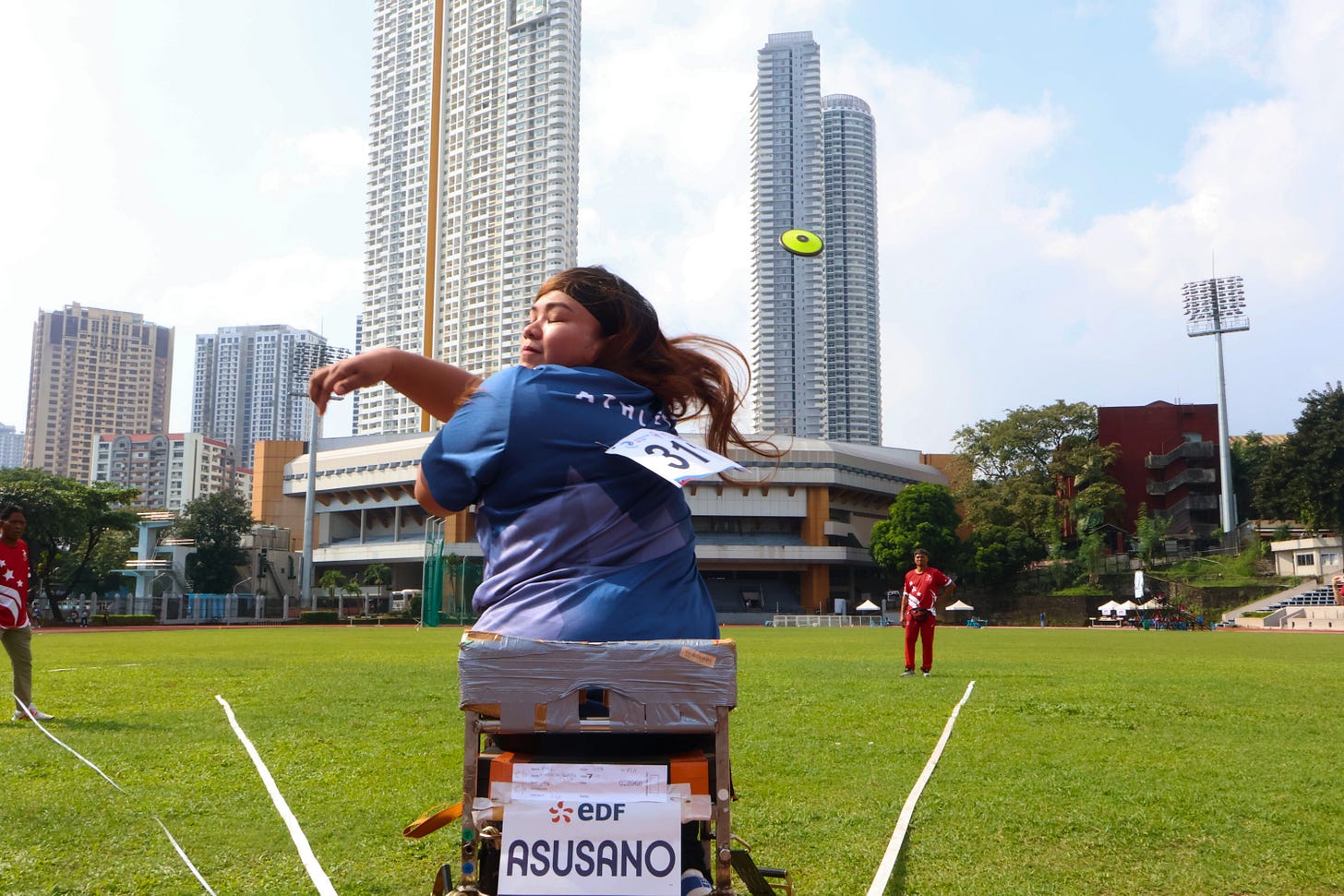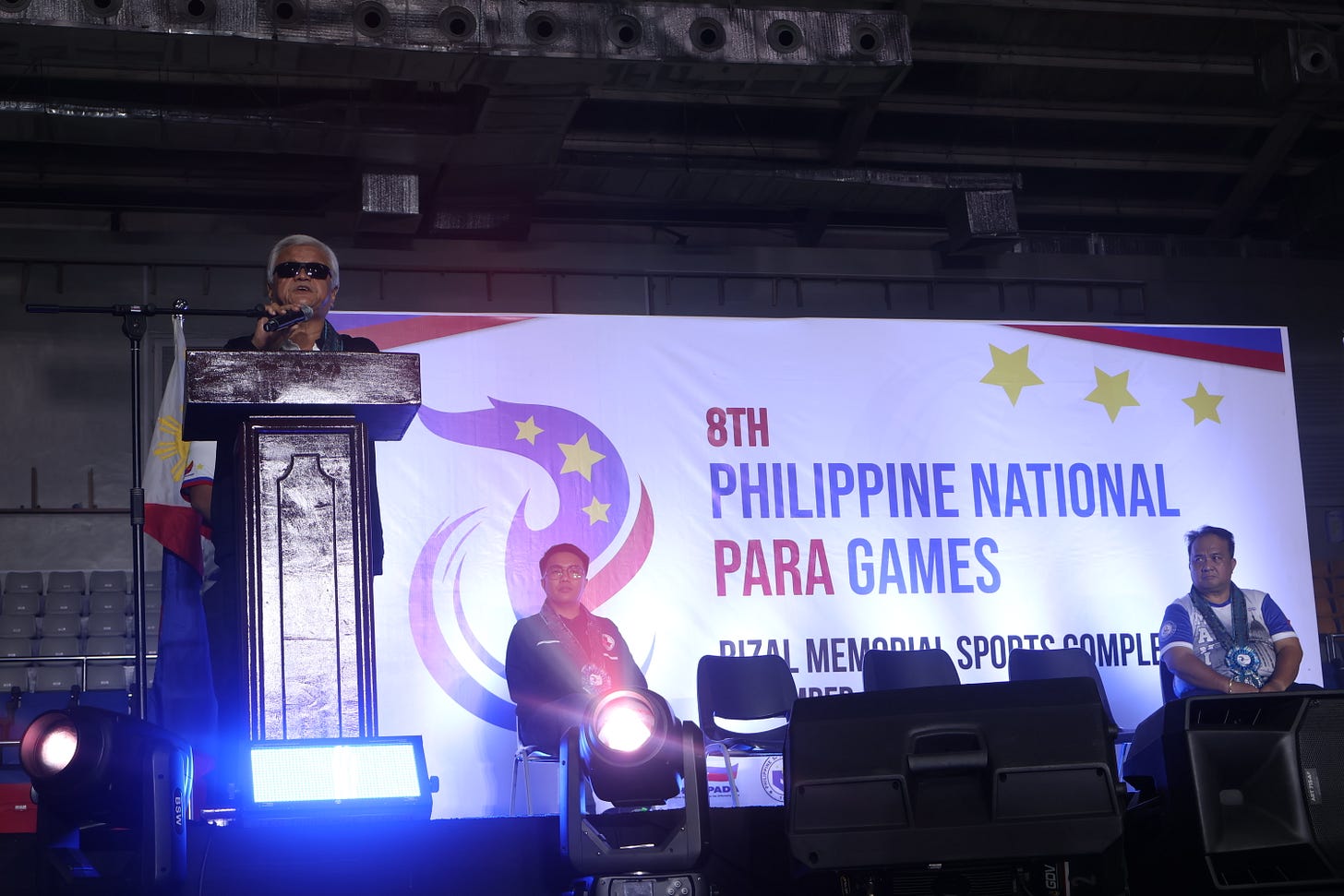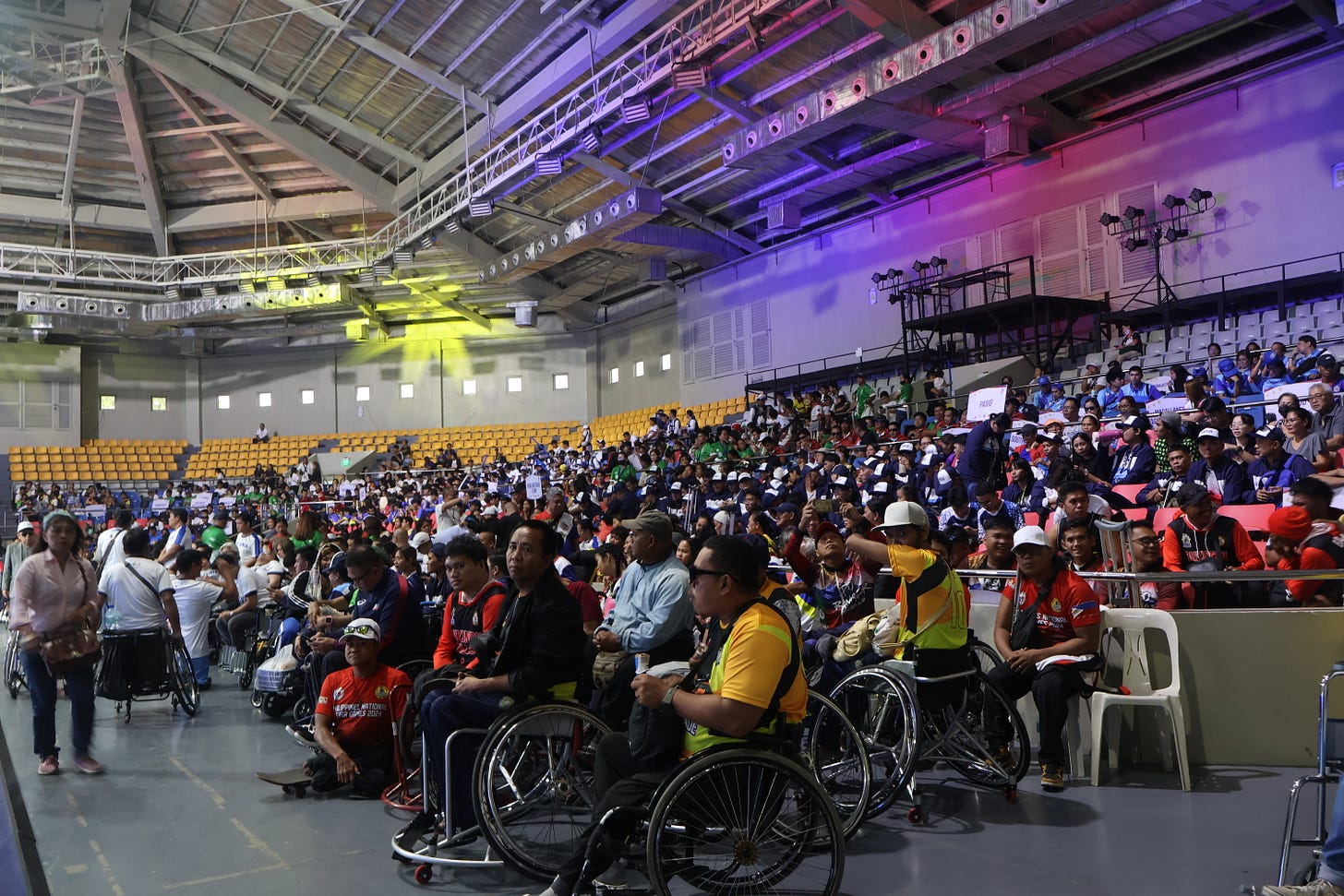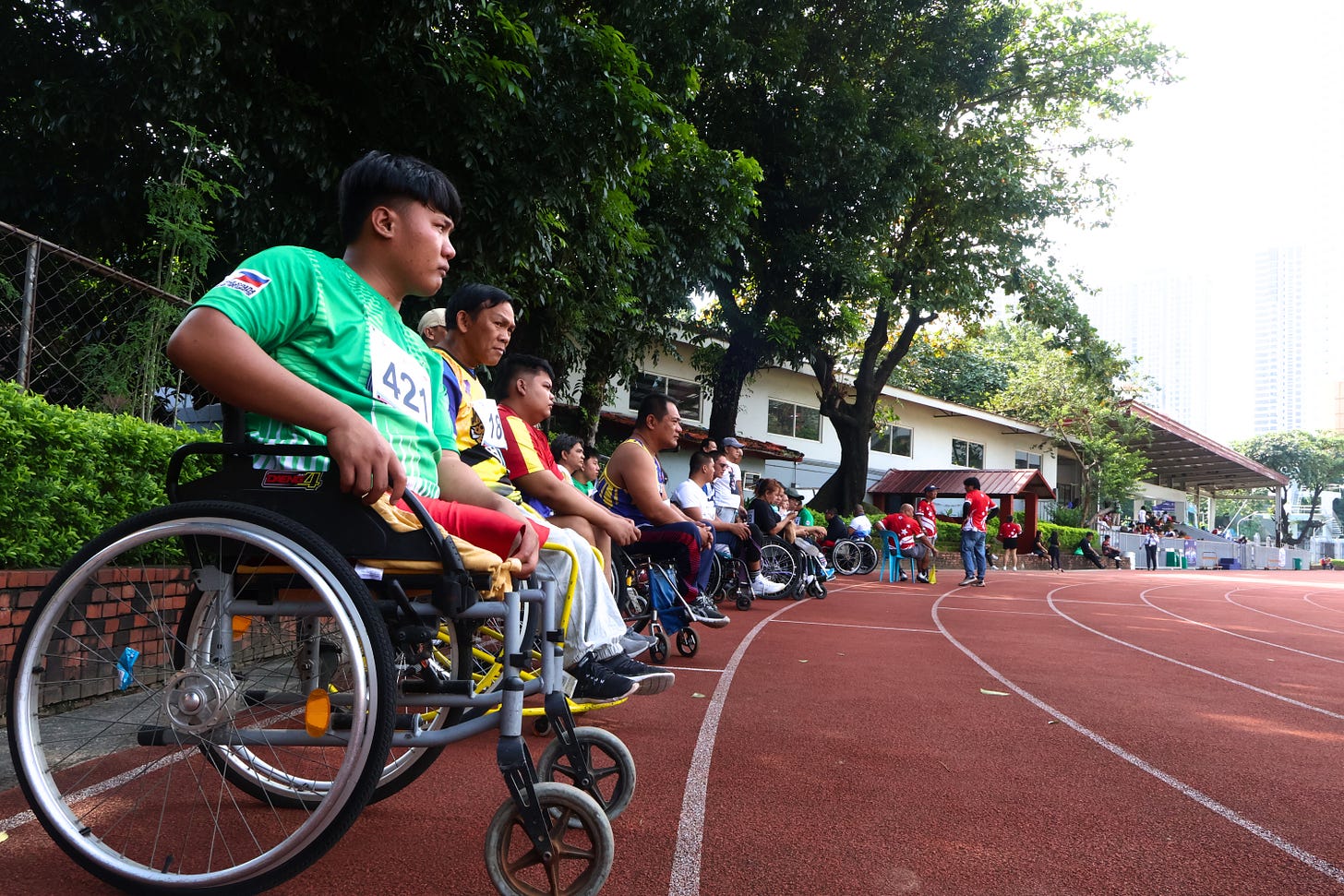Disabling disabilities: Stepping inside the Para Games’ parade of colors
by Kauliran Productions
Disabling disabilities: Stepping inside the Para Games’ parade of colors
By: Maui Jamil Balmaceda, Eden Mae Garcia, Rica Mae Labbao, Heaven Grace Peralta, Dulce Amor Rodriguez, Kriza Marielle Sumang – Kauliran Productions
To many, sports are for the healthy and able—no room for disabilities.
[1] Cendy Asusano, a para athlete, launches a powerful discus throw during the second day of the 8th Philippine National Para Games 2024 held at the Philippine Sports Track Oval.
However, Filipino athletes with physical and mental impairments have shattered this notion through their remarkable achievements. They continue to excel nationally and internationally, proving that determination and resilience know no bounds.
Despite their success, limited media coverage often sidelines their victories, leaving many Filipinos unaware of their inspiring stories. Yet, para athletes persist—showing that true ability transcends physical limitations and challenging the nation to embrace a more inclusive definition of excellence in sports.
Birth of Para Games in the Philippines
Just like every other thing on the planet, the history of the para games in the Philippines started out as an idea. It was all because of a blind man who became so passionate in supporting persons with disabilities (PWDs) that are playing sports.
[2] Michael Barredo, founding president of PPC, visually impaired, delivers his speech to officially open the 8th Philippine National Para Games 2024 at the Rizal Memorial Complex.
Michael Barredo was interested in creating a national association dedicated to sports played by differently abled persons. In August of 1997, the Philippine Paralympic Committee (PPC), formerly known as the Philippine Sports Association for the Differently Abled (PHILSPADA), was founded.
From there, the traces of para games in the Philippines started and are continuously flourishing.
“Our objective remains, which is to champion para sports development and inclusion,” Barredo said in a para sports event, encapsulating the mission that continues to inspire para athletes today.
Para games, what?
Shortly 3 years after the founding of PHILSPADA, they launched their first nationwide para sports tournament in Cebu. However, it was in the year 2012 when they first organized the inaugural edition of the Philippine National Para Games, formerly known as PSC-PHILSPADA National Para Games, at the Marikina Sports Park. This first edition four-day para games activity featured nine events and three demo sports.
[3] Para athletes from various regions and provinces gather inside the Ninoy Aquino Stadium during the opening ceremonies of the 8th Philippine National Para Games.
The second edition happened in 2013 at Santa Cruz, Laguna, while the third (2014), fourth (2015), fifth (2016), and sixth (2018) editions happened in Metro Manila. It was 2019 when it was done again outside Metro Manila, in the grounds of Malolos, Bulacan.
Since the COVID-19 pandemic happened, the event halted for five years and returned in November of this year (2024) at the Rizal Memorial Stadium and Philippine Sports Complex. The 8th Philippine National Para Games was joined by various para athletes representing different cities and provinces of the Philippines.
Over 900 para athletes were able to compete in nine different events, including para archery, para athletics, para badminton, boccia, para chess, para powerlifting, para swimming, para table tennis, and wheelchair basketball.
What does it take to be a para athlete?
The process involves both skill and commitment. Para athletes often begin by excelling in local tournaments organized by community sports programs or NGOs focused on PWD empowerment.
[4] Para athletes for wheelchair racing line up on the track, waiting for their turn to compete during the second day of the 8th Philippine National Para Games 2024 held at the Philippine Sports Track Oval.
Those who stand out are invited to try out for regional meets, where they compete under the supervision of licensed coaches and trainers. Success at the regional level can lead to participation in the Philippine National Para Games (PNPG), where athletes are scouted by representatives from the Philippine Paralympic Committee (PPC) for potential inclusion in the national team.
The journey demands discipline, determination, and adaptability. For many, sports is more than a career—it's a lifeline.
Glimpse inside the world of para athletes
Behind every win of a Filipino para athlete is a story of hard work and determination. Joel Deriada, the head coach of the Philippine Team National Para Athletics, shares his journey of coaching para athletes since 2005. Before being tapped by PHILSPADA to coach the team, he started as a coach for regular athletes in 1999. He remembers the challenges during his early years, like requesting funds and ensuring the athletes received consistent monthly allowances.
[5] A volunteer coach assists a para athlete in settling on their racing wheelchair before the start of the competition.
Things started to improve in 2015 when Republic Act 10699 or also known as the “National Athletes and Coaches Benefits and Incentives Act” was passed, requiring the government to support para-athletes with allowances, uniforms, and accommodations.
Despite the struggles, Coach Joel says he has the highest respect for his athletes, sharing, “‘Di nila iniisip ang kanilang disability, they move on their own.”
(They don’t think about their disability, they move on their own.)
For Coach Joel, being a coach is not just about training for competitions; it’s also about guiding athletes in life. He spends time not only planning strategies for training but also helping them deal with personal challenges, like family problems and preparing for life after sports. He’s seen how sports improve the morale and confidence of para athletes, giving them a sense of purpose. Through hard work, teamwork, and the support of their coaches, Filipino para athletes prove that disability is not a barrier to achieving greatness.
Struggle for visibility
While para games have come a long way in gaining recognition, media coverage remains a challenge. Often overshadowed by mainstream sporting events, para sports struggle to gain consistent attention from major outlets.
[6] A para athlete takes a moment to stop and roam her eyes around the Ninoy Aquino Stadium following the opening ceremonies of the 8th Philippine National Para Games 2024.
This lack of visibility, however, doesn’t diminish their spirit. In fact, it fuels a stronger determination among para athletes to excel and advocate for inclusivity. Every medal they win, every record they break, is a statement: We are here, and we are capable.
“We need more stories that inspire, educate, and challenge misconceptions,” Barredo said, calling on media outlets to amplify the voices of para athletes.
The journey of para sports in the Philippines is a testament to the power of perseverance and the importance of inclusivity. These athletes are not just competing for medals, they are breaking stereotypes and changing lives.
Their stories may not always be front-page news, but they resonate deeply. Para athletes remind us that sports transcend physical limitations—it’s about heart, resilience, and the courage to defy the odds.
Their journey is a rallying cry for greater inclusion, visibility, and celebration. With each victory, they inspire Filipinos to believe that greatness knows no bounds. It’s not just about winning medals, it’s about winning respect, representation, and the fight for equality in every arena they are competing.
“Bida ang mga bayaning manlalaro.”





